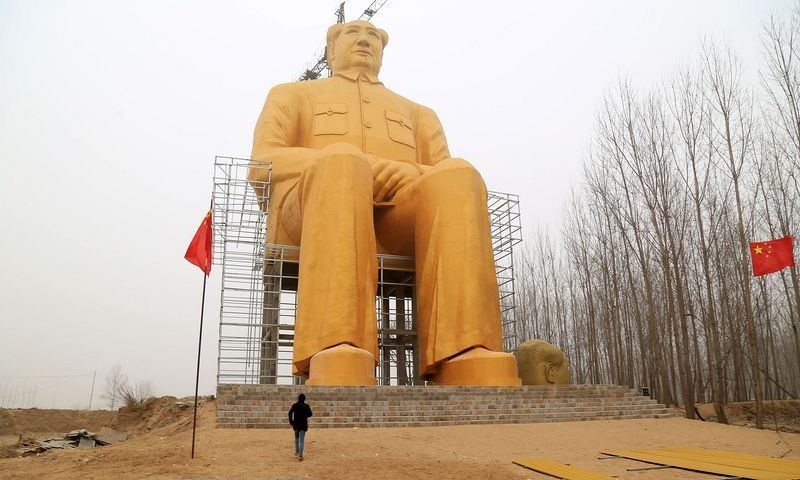Mao Zedong, the founding father of the People's Republic of China, was a controversial figure. His Marxist–Leninist theories, military strategies and communist ideas, especially his “Great Leap Forward” campaign, where he attempted to rapidly transform China's economy from an agrarian economy to an industrial one, led to widespread famine resulting in the death of an estimated 45 million people. Through starvation, forced labor and executions, Mao killed a total of 70 million Chinese during his 27-years tenure as the Chairman of Communist Party of China.
But in mainland China, Mao is still revered by many supporters of the Communist Party and respected by the majority of the general population for bringing unity and stability to the country, and for laying the foundation for China to become a world power. In their hearts, Mao Zedong represents the embodiment of fairness and justice. It’s a fact that during his rule, status of women rose, education and health care improved, and life expectancy increased. It’s no surprise then, that his portrait still stares out over Beijing’s Tiananmen Square and his face still appears on banknotes. There is even a gigantic bust of a Young Mao Zedong in Orange Isle, in Hunan.

Photo credit: China Stringer Network/Reuters
Last month, a wealthy businessman in a remote village in Tongxu county, in central China's Henan province, decided to erect a gigantic statue of this great leader in a farmland, at his own expense.
Pictures of the 36-meter high statue, depicting Chairman Mao sitting on a chair with his hands crossed in his lap, is being shared massively across the internet the past few days. The statue is made of steel and concrete and painted over with golden color. Construction of the statue reportedly cost 3 million yuan (about $460,000).
The statue has drawn both praise and criticism on Chinese social media. Some users called it an embarrassment, while another argued that the money could have been better used to alleviate poverty first.
Ironically, the statue is located in a province that is still one of China’s poorest regions, and one of the worst hit areas by the famine started by Mao Zedong.

Photo credit: China Stringer Network/Reuters
Photo credit: China Stringer Network/Reuters
Photo credit: China Foto Press

Photo credit: China Stringer Network/Reuters

The 32-meter tall Youth Mao Zedong Statue in Orange Isle, Changsha, Hunan, China. Photo credit: unknown
via The Guardian














A good example of Stockholm syndrome
ReplyDeleteIt is already gone...
ReplyDeletehttp://www.msn.com/en-us/news/world/giant-statue-of-ex-chinese-leader-mao-zedong-demolished/ar-CChtok?ocid=ansmsnnews11